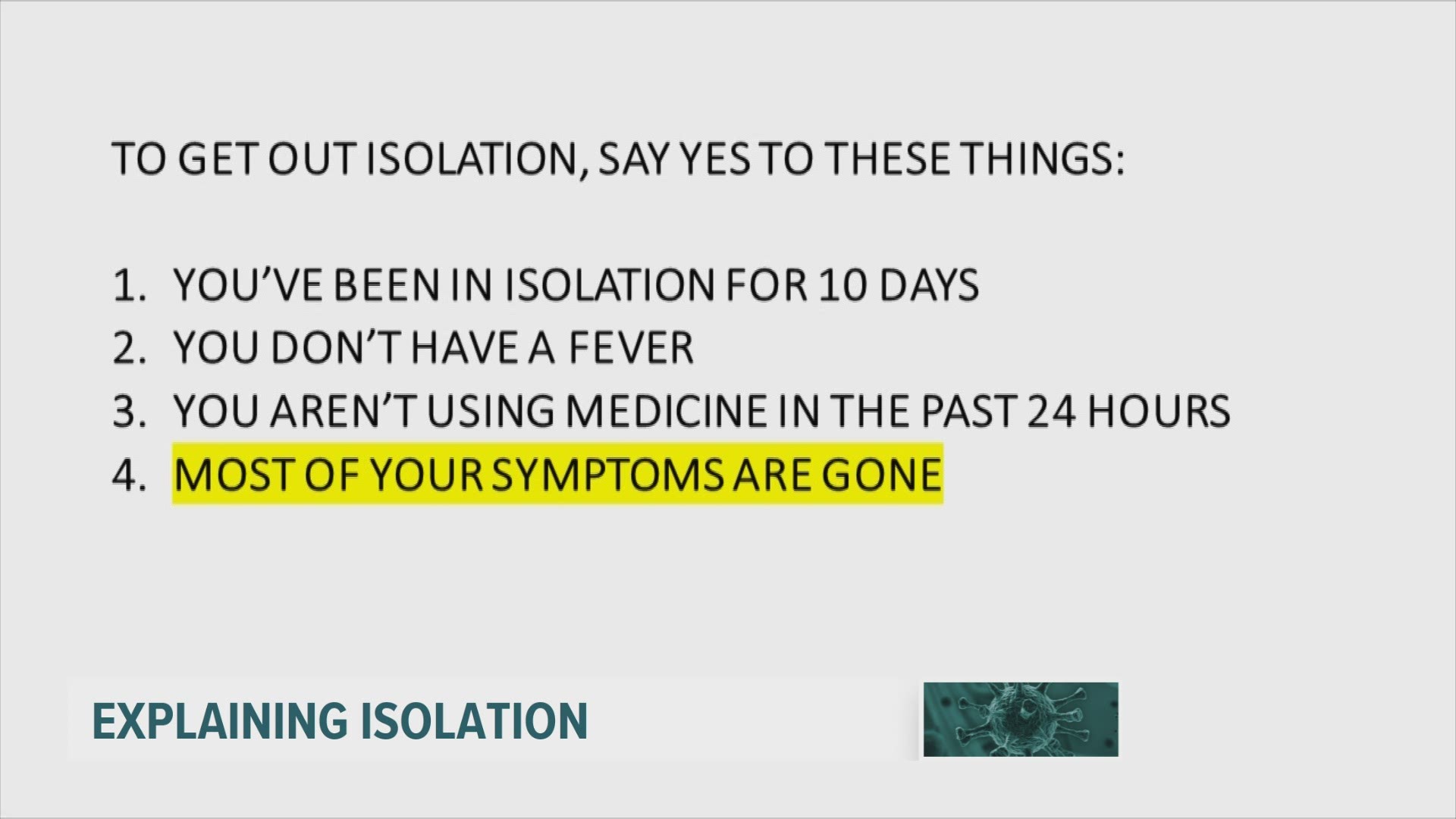POLK COUNTY, Iowa — Understanding the difference between isolating and quarantining during the COVID-19 pandemic could save countless lives, and it's just important now as it was at the start.
It can be a bit confusing, so Local 5 reached out to Nola Aigner Davis with the Polk County Health Department to help break it down.
What does quarantine mean?
When you're told to quarantine for 14 days by a contact tracer, it means you have been exposed to someone with the novel coronavirus, Aigner Davis explained.
The 14-day period is set because that's about how long it takes for symptoms to develop.
Let's say you're exposed on Monday and you get tested Friday. Your test comes back negative, but does that mean you're in the clear?
"No, because that test is one point in time and you can develop symptoms on day seven, day eight, day nine and we have seen people develop symptoms as late as day 14," Aigner Davis explained.
What does isolation mean?
Folks are told to isolate once they have tested positive for the virus.
"If you've tested positive, you are in isolation for at least 10 days. Now, why is that at least? Because we know that people can be sick for a lot longer," Aigner Davis said.
To get out of isolation, you need to say "yes" the following:
- You've been in isolation for 10 days
- You don't have a fever
- You haven't used medicine in the last 24 hours
- Most of your symptoms are gone
"The reason why it's 10 days is because after day 10 we see you are not as infectious so that's why there is a difference between 14 days and 10 days," Aigner Davis said.
"Just because I look healthy, I don't have signs or symptoms and we are seeing so many people test positive, that is why it is so important for people to follow quarantine and isolation guidance."
The Centers for Disease Control and Prevention recommends frequent hand washing, avoiding close contact and staying home if you are sick as main areas of focus for prevention and containment of COVID-19.
WATCH: Complete coronavirus coverage on Local 5's YouTube channel

